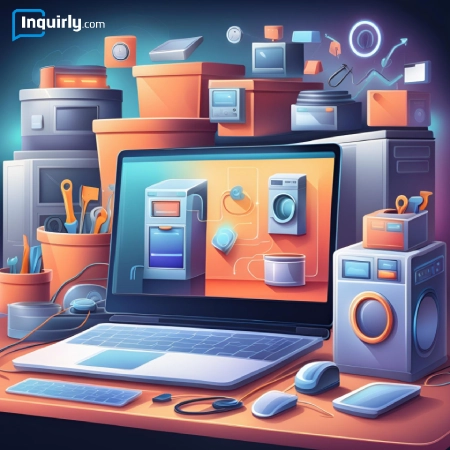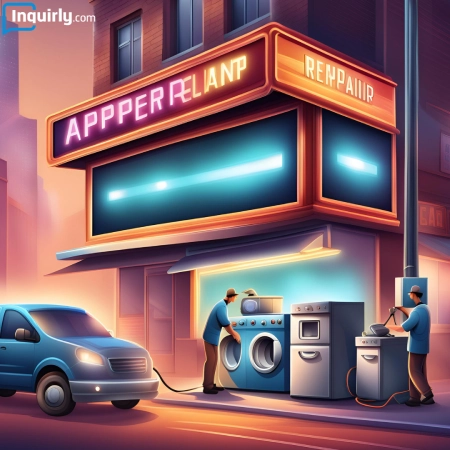Efficient lead management is key to business growth and customer satisfaction. As customer expectations rise, organizations must seek ways to streamline operations and improve service quality. One effective approach is to use Customer Relationship Management (CRM) tools, which significantly impact how you manage and convert leads. But how exactly do CRM technologies help your appliance repair business? Businesses using CRM software see increases in sales of 29% and sales productivity of 34%, demonstrating the positive impact of these tools.
In this article, we will cover the various ways CRM tools can be used to manage appliance repair leads effectively. We’ll analyze the role of CRM as a managing tool and present detailed guidance.
CRM Tools to Manage Appliance Repair Leads

Software platforms known as customer relationship management (CRM) solutions are made to help businesses better manage their relationships with both present and future clients. These tools increase profitability, enhance customer service and simplify operations..
There are numerous essential elements involved in using a CRM system to manage appliance repair leads effectively. CRM technologies can be used as effective management tools for your appliance repair company in the following ways:
1. Improved Communication and Cooperation
To keep everyone updated, team members can update the status of leads or jobs. For example, if a technician needs to place an order for a part, they may record this in the CRM. The office staff will be able to monitor the part’s delivery and notify the client of any delays.
2. Automated Workflows
Repetitive tasks like sending follow-up emails and appointment reminders are automated by CRM systems. Time is saved and consistency is ensured. For example, after a repair, the CRM can automatically send a thank-you email to the customer, along with a feedback request.
3. Customer Information
All client information, including contact information, service records, and communication logs, is kept properly in a CRM system. For instance, when a customer calls for service, your team can quickly access their past interactions and appliance details.
4. Track Lead Progress
From the initial contact to the completion of the job, track each lead’s status using the CRM pipeline. Adjust the stages to match your company’s procedures. It can be a lead in the CRM that changes from “New Inquiry” to “Quote Sent” to “Appointment Scheduled,” enabling your team to swiftly determine each lead’s status.
5. Schedule Appointments
To handle reservations and prevent double bookings, sync your CRM with appointment scheduling tools. Customers can also receive automated reminders to help reduce the number of no-shows. Imagine a scenario, when a customer books a repair online, the CRM is automatically updated, the technician is notified and the customer receives a confirmation email.
6. Improved Analytics and Reporting
CRM software has extensive reporting capabilities that provide insight into how businesses operate. Metrics like customer satisfaction ratings and lead conversion rates are trackable, which enables you to see trends and make decisions based on data.
Tips for Using CRM Tools Effectively
- Personalize Communication – to customize your communications with leads, use the data stored in your CRM. To make your communications more interesting and relevant, bring up previous conversations or particular issues related to the specific leads.
- Update Information – make sure that lead information is updated regularly by every team member. This keeps the data up to date and helpful for decision-making.
- Train Your Team – give your employees thorough instructions on how to operate the CRM effectively. They can handle leads more effectively the more skilled they are.
Technical Guides to Use CRM Tools

Data Import and Clean-Up – begin by importing all existing lead and customer data into your CRM. To guarantee accuracy and get rid of duplicates, clean up the data. Use the CRM’s import tools to map fields correctly and verify the data integrity.
Custom Field Creation – in your CRM, add custom fields to record specific information such as the type of appliance, service history and warranty. This allows for more detailed tracking and personalized service.
Pipeline Configuration – tailor the steps of your sales pipeline to match your lead management strategy. Clearly define each step of the process, from the first inquiry to the completion of the project, and set up the pipeline so that leads are moved automatically based on predetermined actions or criteria.
Connect Your CRM to Other Tools – connect your CRM to other important tools like customer support systems, accounting software, and email marketing platforms. To make sure that data flows between systems smoothly, use built-in connectors or APIs.
User Roles and Permissions – to manage access to critical data, specify user roles and permissions inside the CRM. Determine that each team member has the right amount of access according to their jobs and responsibilities.
Which CRM Software to Choose
Purchasing a CRM system is a way to use technology to improve customer interactions and drive companies to grow. The top CRM choices for appliance repair businesses are the following ones:
Salesforce

For larger firms in need of all-inclusive solutions, this powerful CRM with advanced customization possibilities is ideal. Key features include lead and opportunity management, advanced analytics, automation tools and extensive integration. Lead and opportunity management enables you to track leads as well as manage opportunities using custom pipelines. In-depth reporting and insights to spot patterns and measure performance are offered by advanced analytics. You can also increase productivity by streamlining processes and tasks with the support of automation tools. Salesforce can be extensively integrated with a wide range of third-party applications, such as marketing platforms and accounting software.
.
HubSpot CRM

HubSpot CRM is well-known for its user-friendly interface and broad functionality, making it an ideal choice for small companies. It provides a free version with the necessary tools to get you started, as well as premium features that may be purchased through subscription plans.
HubSpot CRM’s key features include contact management, email tracking and templates, sales pipeline management, and numerous integration capabilities. To get the most out of HubSpot CRM, create your contact database by importing contacts and leads that already exist. Then, use forms on your website to add new leads straight into the CRM. Create automated email sequences to nurture leads and maintain their engagement to automate follow-ups.
Conclusion
Integrating CRM tools into your appliance repair business can significantly improve the way you manage leads. CRM solutions optimize your operations and support business growth by carrying out every aspect from automating routine tasks and enhancing communication to providing comprehensive analytics and personalized client interactions. By choosing the right software and applying it effectively, you can boost lead management, increase sales and guarantee customer satisfaction.
Suggested CRM Software Links:
For Exclusive Appliance Repair Leads:
Contact us Inquirly.com
For the Best Marketing Ideas, Check Out this Article



